“For centuries, the Moken sea nomads have traveled the islands between Thailand and Myanmar fishing and foraging for food on the sea floor. Throughout the Mergui Archipelago, Moken migrate in flotillas of Kabangs (traditional boat of the Moken people), stopping at different islands and beaches. Expert freedivers, the Moken have adapted physically to an aquatic life, developing unique characteristics that let them see better and hold their breath longer while underwater.
Today, however, under pressure from the Thai government, and unable to see a viable future after the devastation of the 2004 tsunami and rampant commercial overfishing, all of the Moken in Thailand have settled into villages. These villages are often places of frustration, where Moken, born at sea without birth certificates, are treated as stateless and struggle to find jobs or receive benefits from the government. Alcoholism and unemployment rates are high.
Recently, one of these Thai Moken traveled the Mergui Archipelago to the relatively undeveloped islands of southern Myanmar, searching for Moken still living traditionally. In his search up to the 11th parallel, he only found one remaining Moken family living on a Kabang. This family travels alone from island to island searching for areas not completely exploited by increasingly unsustainable fishing methods employed in Burma. They are likely the last family still living a nomadic lifestyle aboard the Kabang. The rest of the Burmese Moken have settled permanently, frustrated with the increasing difficulty of finding food and pressured by a government eager to capitalize on Moken culture to increase tourism, creating what some see as a “human zoo”. – Taylor Weidman
Today, however, under pressure from the Thai government, and unable to see a viable future after the devastation of the 2004 tsunami and rampant commercial overfishing, all of the Moken in Thailand have settled into villages. These villages are often places of frustration, where Moken, born at sea without birth certificates, are treated as stateless and struggle to find jobs or receive benefits from the government. Alcoholism and unemployment rates are high.
Recently, one of these Thai Moken traveled the Mergui Archipelago to the relatively undeveloped islands of southern Myanmar, searching for Moken still living traditionally. In his search up to the 11th parallel, he only found one remaining Moken family living on a Kabang. This family travels alone from island to island searching for areas not completely exploited by increasingly unsustainable fishing methods employed in Burma. They are likely the last family still living a nomadic lifestyle aboard the Kabang. The rest of the Burmese Moken have settled permanently, frustrated with the increasing difficulty of finding food and pressured by a government eager to capitalize on Moken culture to increase tourism, creating what some see as a “human zoo”. – Taylor Weidman
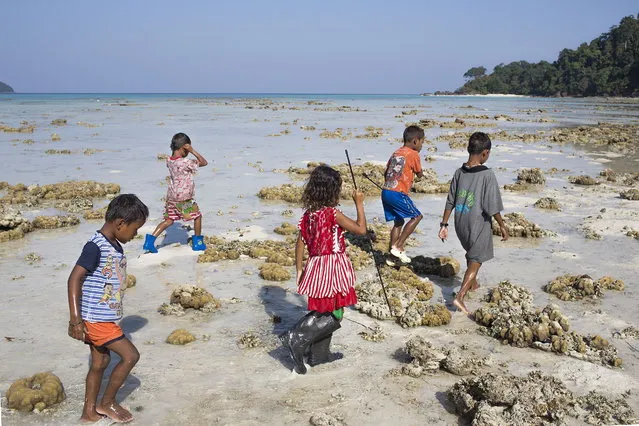
Moken children forage for food during low tide. February 28, 2013 – Ko Surin, Thailand. (Photo by Taylor Weidman/zReportage via ZUMA Press)
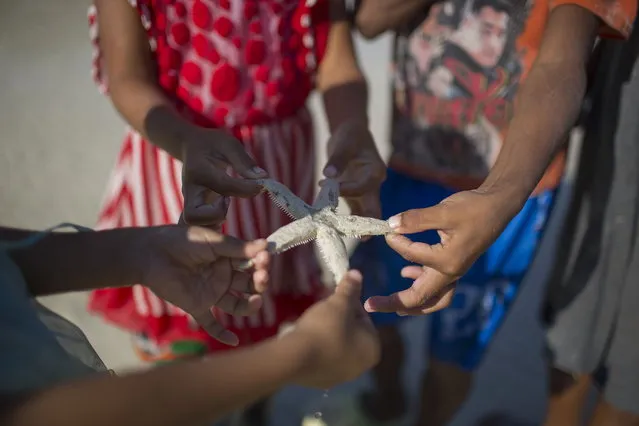
Moken children display a starfish they've found while scavenging at low tide. February 28, 2013 – Ko Surin, Thailand. (Photo by Taylor Weidman/zReportage via ZUMA Press)
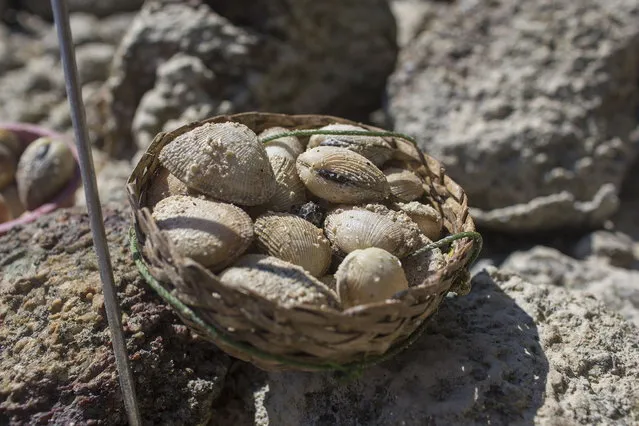
Clams collected on a foraging trip in Ko Surin National Park. March 1, 2013 – Ko Surin, Thailand. (Photo by Taylor Weidman/zReportage via ZUMA Press)
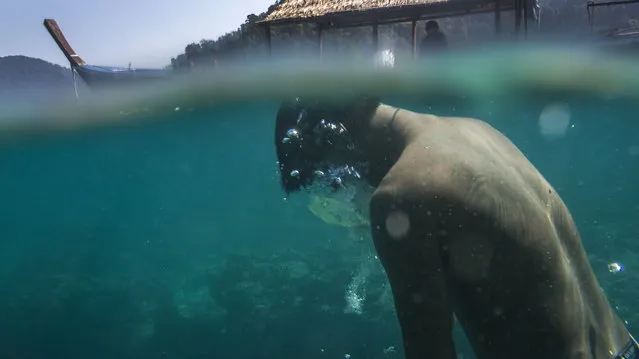
Hook, a Moken man, fishes for lobster in the waters near his village in the Ko Surin National Park. February 28, 2013 – Ko Surin, Thailand. (Photo by Taylor Weidman/zReportage via ZUMA Press)
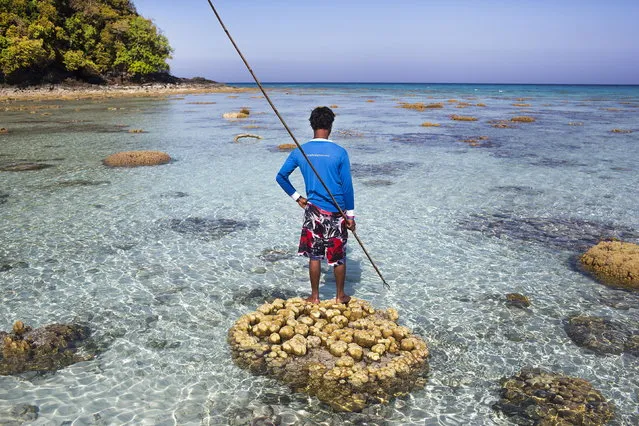
Hook, an indigenous Moken man, holds a three-pronged throwing spear and searches for fish in the waters of Ko Surin National Park. March 1, 2013 – Ko Surin, Thailand. (Photo by Taylor Weidman/zReportage via ZUMA Press)
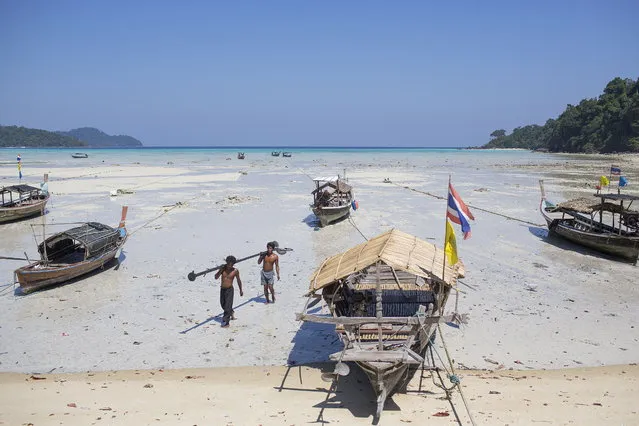
Moken men carry parts from a long tail boat engine to shore before fixing a broken propellor. The foremost boat is one of only a few Kabang left in the world. Traditionally, Moken would live most of the year aboard Kabang and each boat would hold a nuclear family. February 27, 2013 – Ko Surin, Thailand. (Photo by Taylor Weidman/zReportage via ZUMA Press)
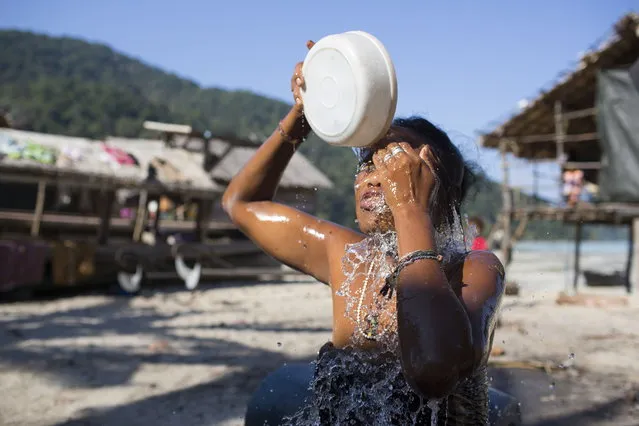
Koh, an indigenous Moken woman, washes her face with freshwater after making charcoal in the jungle. February 27, 2013 – Ko Surin, Thailand. (Photo by Taylor Weidman/zReportage via ZUMA Press)
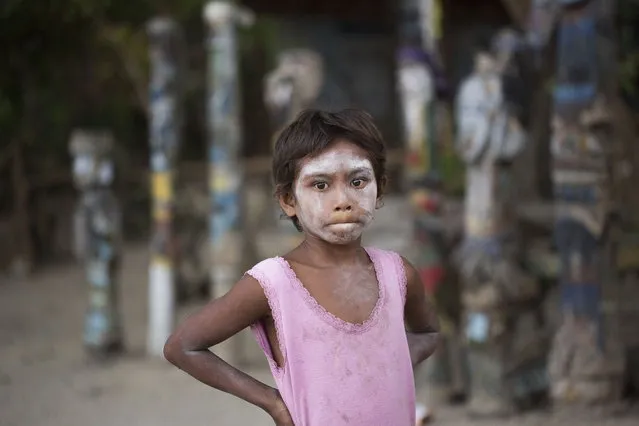
A young Moken boy with his face covered in Thanaka takes a break from playing games in front of the village's spirit poles. February 28, 2013 – Ko Surin, Thailand. (Photo by Taylor Weidman/zReportage via ZUMA Press)
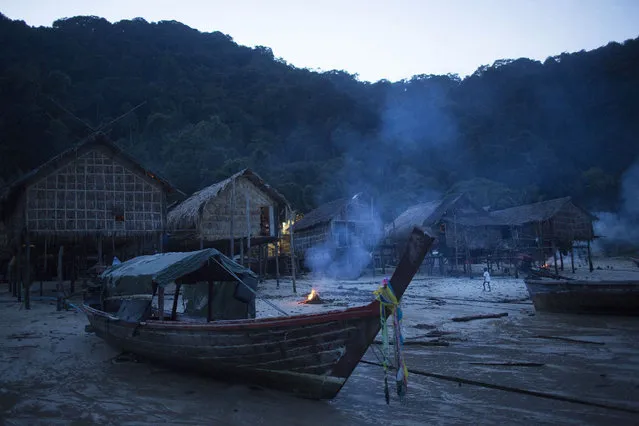
The Moken village in Ko Surin National Park, Thailand. October 10, 2013 – Ko Surin, Thailand. (Photo by Taylor Weidman/zReportage via ZUMA Press)
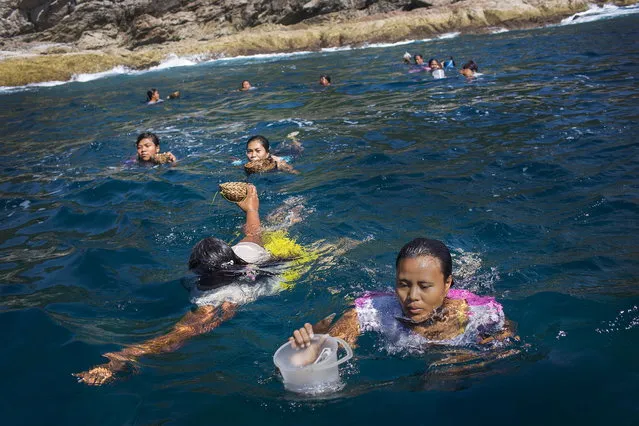
Moken women return to a waiting boat after foraging for food on the rocky shores of the Ko Surin National Park. February 28, 2013 – Ko Surin, Thailand. (Photo by Taylor Weidman/zReportage via ZUMA Press)
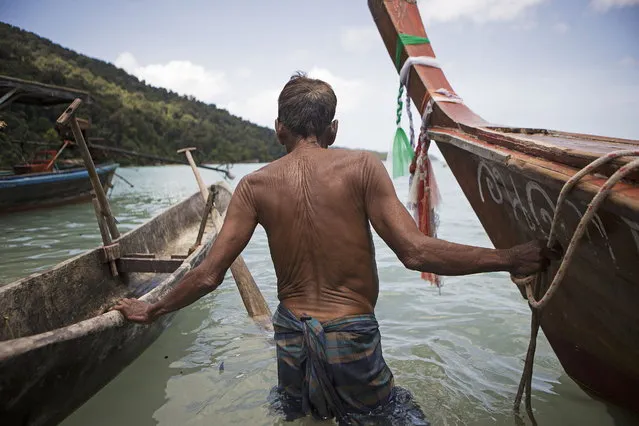
An indigenous Moken man takes his boat out from the beach near his village in Ko Surin National Park. October 11, 2013 – Ko Surin, Thailand. (Photo by Taylor Weidman/zReportage via ZUMA Press)
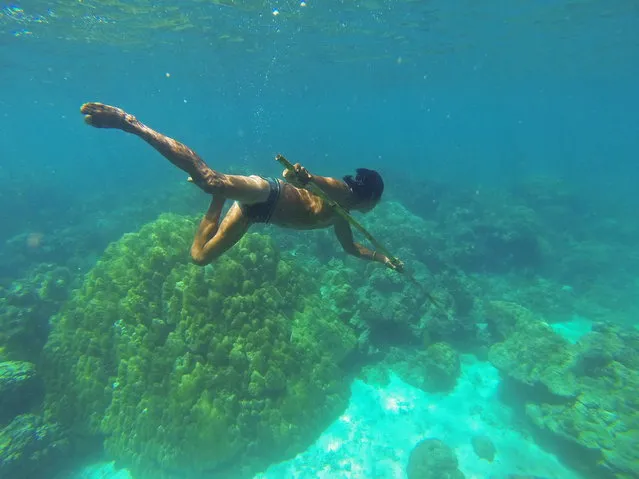
Danong, an indigenous Moken man, hunts for fish using a traditional bamboo spear near his village. Today, the Moken who live in Koh Surin National Park, one of Thailand's most remote group of islands, have it better than many of their kin and are still able to live a lifestyle largely based on tradition and the sea. October 11, 2013 – Ko Surin, Thailand. (Photo by Taylor Weidman/zReportage via ZUMA Press)
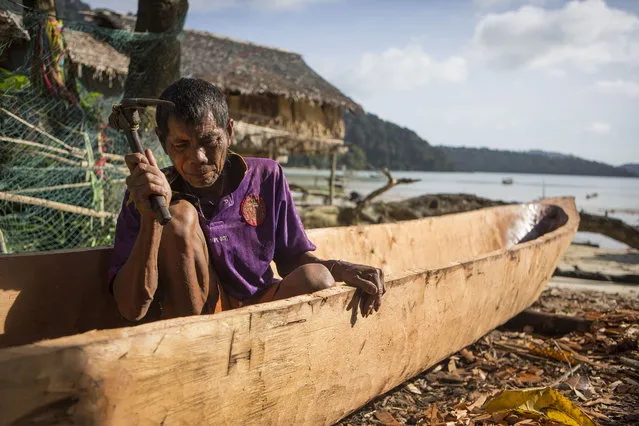
A Moken man builds a small boat (called Sampan) in his village in the Ko Surin National Park. October 11, 2013 – Ko Surin, Thailand. (Photo by Taylor Weidman/zReportage via ZUMA Press)
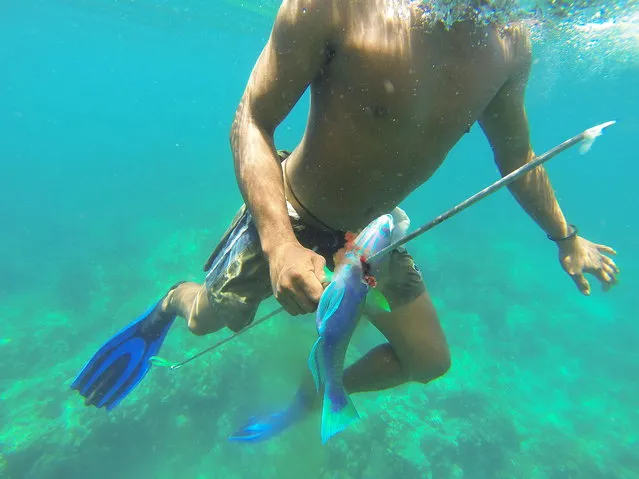
Nguy, an indigenous Moken man, hunts for fish using a spear near his village. Often called sea nomads or sea gypsies, the Moken are a seafaring people who for centuries lived nomadically on the Andaman Sea. October 11, 2013 – Ko Surin, Thailand. (Photo by Taylor Weidman/zReportage via ZUMA Press)

Moken women forage for food during low tide at a beach near their village in Ko Surin National Park. March 1, 2013 – Ko Surin, Thailand. (Photo by Taylor Weidman/zReportage via ZUMA Press)
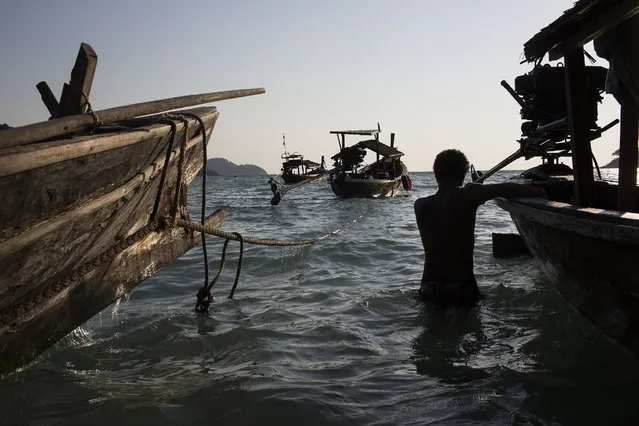
Nguy, an indigenous Moken man, takes his boat out as the tide comes in. The boat on the left (identified by it's unique prow design) is one of only a few Kabang left in the world. Traditionally, Moken would live most of the year aboard Kabang and each boat would hold a nuclear family. February 27, 2013 – Ko Surin, Thailand. (Photo by Taylor Weidman/zReportage via ZUMA Press)
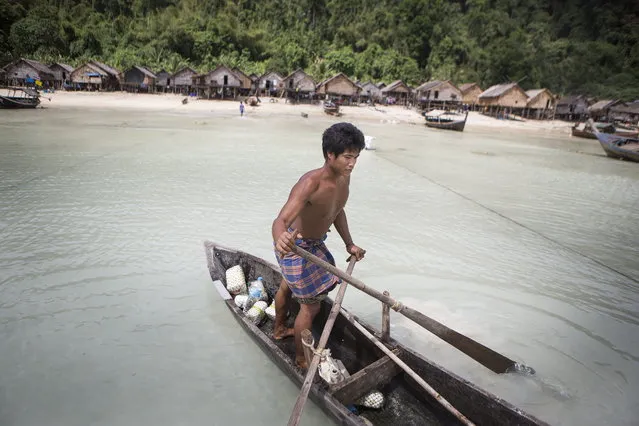
Nguy, an indigenous Moken man, rows a sampan out from his village. On these islands, it's possible to see free-diving Moken men spearfishing in the water or groups of women foraging along the shores, tidal pools, and mud flats. October 11, 2013 – Ko Surin, Thailand. (Photo by Taylor Weidman/zReportage via ZUMA Press)
24 Mar 2014 06:45:00,
post received
0 comments
